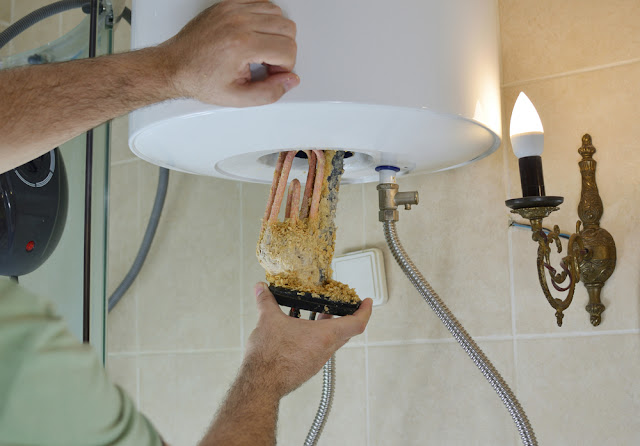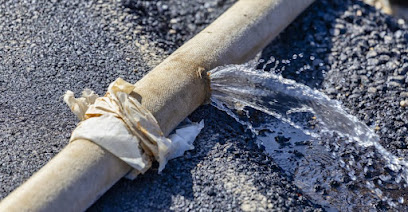3 Steps To A Stress-Free Water Heater Installation
Are you dreading your water heater installation? Relax! With these three simple steps, you can make the process stress-free and easy. Step one: pick the right water heater for your needs. Step two: schedule a professional installation. And step three: enjoy worry-free hot showers for years to come. Follow these steps, and you'll be good to go!
Image Source
Homeowners who are in need of a new water heater often dread the installation process. After all, it can be a messy and complicated job. However, there's no need to worry - with a little preparation, you can make sure your water heater installation goes smoothly. Follow these three steps for a stress-free experience:
1. Choose the right location. When selecting a spot for your new water heater, be sure to consider both the size of the unit and the surrounding area. You'll need enough space for both the unit and any necessary plumbing. Additionally, be sure to choose a location that is close to an electrical outlet - this will make wiring much easier.
2. Gather your materials. Before starting your water heater installation, be sure to have all of the necessary materials on hand. This includes things like a water heater installation kit, pliers, a screwdriver, and Teflon tape. Having everything you need beforehand will save you time and frustration later.
3. Follow the instructions. Be sure to read your water heater's installation instructions carefully before getting started. This will ensure that you do the job correctly - and avoid any costly mistakes.
With just a little planning and preparation, your water heater installation can be a breeze. So don't wait - get started today!
Types of Water Heaters
There are many types of water heaters available in the market today. Each type has its own advantages and disadvantages, so it is important to choose the right one for your needs.
The most common type of water heater is the electric water heater. These heaters use electricity to heat water and are very efficient. However, they can be expensive to operate and may require special wiring.
Gas water heaters are another option. These use natural gas or propane to heat water and are less expensive than electric models. They are also easier to install than electric models.
Solar water heaters are a great alternative if you live in an area with lots of sun exposure. They use the sun's energy to heat water and are very efficient. However, they can be expensive to install and maintain.
Tankless water heaters are a newer option that is becoming more popular. These heaters do not use a tank of water to store hot water. Instead, they heat water on demand, which can save money on your energy bill.
Choosing the right type of water heater for your home depends on many factors. The most important factor is how much hot water you need and how often you need it. Other factors to consider include the size of your home, the climate in your area, and your budget.
Image Source
Maintenance And Care For Your Water Heater
Your water heater is one of the most important appliances in your home, and it's important to keep it running smoothly. Here are some tips on how to maintain and care for your water heater:
1. Check the temperature regularly. The ideal temperature for your water heater is between 120 and 140 degrees Fahrenheit. If the temperature is too low, your water heater will have to work harder to heat the water, which can lead to premature wear and tear. Too high of a temperature can be dangerous, so be sure to adjust the setting if necessary.
2. Flush the tank regularly. sediments can build up in the bottom of the tank over time, which can reduce the efficiency of your water heater and shorten its lifespan. To flush the tank, simply turn off the power to the unit and attach a garden hose to the drain valve at the bottom of the tank. Open the valve and let the water run until it is clear.
3. Inspect the anode rod. The anode rod is a metal rod that helps to protect the tank from corrosion. Over time, it will corrode and need to be replaced. You can check the condition of the anode rod by removing it from the tank and inspecting it for signs of corrosion. If it is heavily corroded, it should be replaced.
4. Drain the tank regularly. Draining the tank helps to remove sediments and minerals that can build up over time and reduce the efficiency of your water heater. To drain the tank, simply turn off the power to the unit and attach a garden hose to the drain valve at the bottom of the tank. Open the valve and let the water run until it is clear.
Conclusion paragraph:
Installing a water heater can be a daunting task, but following these three simple steps can make the process stress-free. Contact EZ Leak Detection today to schedule your installation and rest easy knowing it will be done right.
Author Bio:- Karl Brown
Karl, a marketing manager at EZ Leak Detection, loves to write about plumbing and HVAC services to make the life of the reader easier. Leakages in your property can be dangerous but not all the leaks are easily accessible. He has given extensive information about water leaks and slab leaks and tips to detect them quickly along with quick solutions to prevent you from inconveniences and health hazards.
Leakage problems and malfunction of appliances demand comprehensive solutions. Also, regular maintenance is not the thing to be missed for leading a life with zero hassles. Read our recent post related to leakage detection and repair, alerts for HVAC shutdown and how to repair it, and installation of AC and water heater in San Diego.





Comments
Post a Comment